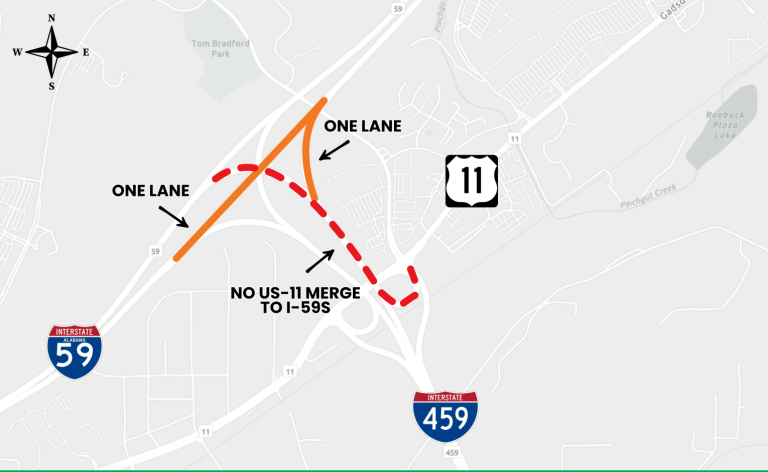5 ways UAB Sustainability plans to transform Birmingham and Alabama
Reading time: 6 minutes
Sponsored

UAB has launched a new sustainability strategic plan that will transform the university’s academic and medical campus by the year 2025.
The most ambitious goal in the UAB plan is a commitment to acquire 20 percent of the university’s energy needs from renewable sources of power and reduce greenhouse gas emissions by 20 percent. Both goals are to be accomplished by 2025.
“That is a real game-changer,” said Mike Kensler, director of the Office of Sustainability at Auburn University. “Implementation of that one policy will be transformative not only for the university and hospital, but for Birmingham and the entire state. It is leadership by example.”
Developed by UAB’s Sustainability program, the plan will help to serve the university, hospital, and surrounding community, using the widely accepted definition of sustainability as “meeting the needs of the present without compromising the ability of future generations to meet their own needs.”
Here are 5 of the plan’s top objectives.
20 by 25 (Air, Climate, & Energy)

A cornerstone of the sustainability plan, UAB will be the first public institution in Alabama to make the 20 by 25 commitment – 20 percent renewables and 20 percent reduction in greenhouse gases.
“Sourcing renewable power and reducing our greenhouse gas emissions is good for local air quality, economic development, human health, ecosystem health, and combating climate change,” stated Julie Price, manager of UAB’s Sustainability Program. “UAB is one of the largest electricity users in the state of Alabama, and this goal is reflective of energy purchasing among large users – public and private – around the world.”
Food waste reduction (Food & Dining)

Campus and hospital dining facilities are a big source of waste.
“Approximately 40 percent of food in the US is wasted,” added Price. “Through the strategies outlined in our Food & Dining objective, we hope to purchase more locally and sustainably produced food, reduce the incidence of excess food, establish better mechanisms for getting leftover food safely to people who need it, and composting what remains. Food waste wastes everything: water, energy, labor, fuel, money and wildlands.”
Transportation

Metro Birmingham has one of the highest rates of drive-alone commuting in the US. UAB intends to change that statistic in their sustainability plan.
“Parking is a hot topic at UAB because there are so many cars coming to campus every day,” said Brian Atkinson, program manager for UAB Transportation. “The average spot in a parking deck costs the university $30K to build so finding other options is financially important. The transportation sector is also a top source of climate change emissions globally, and human health can be negatively impacted by commuting – stress, sedentary lifestyles, etc. We hope to work with key partners like metro area municipalities, the Regional Planning Commission of Greater Birmingham, and the BJCTA (Max bus board) to offer better options, infrastructure and incentives for biking, carpooling and riding the bus.”
Waste

According to UAB Sustainability, waste and recycling is the most popular topic on campus. Everyone wants better recycling programs and composting, and they want the university to find alternatives to using Styrofoam and disposable plastics. The plan’s waste initiatives will look broadly at everything coming onto campus to start reducing waste from the front end, then work to build efficiencies in the way that UAB handles waste so that more can be diverted from the landfill.
Fun fact: A 2011 report from the Alabama Department of Environmental Management found that we spend $25 million per year in Alabama to throw away $190 million in commodities, simply because we don’t have the collection streams and business to handle the commodities. UAB’s purchasing power and waste production can help shift the entire sector.
Purchasing
Almost all of UAB’s initiatives in the Sustainability Plan hinge on purchasing.
“With our economic impact topping $7 billion, we have the opportunity to do a lot of good. We can spur inclusive economic growth through local and diverse suppliers. We can drive more suppliers to sustainable products and processes through our contracts and specifications,” concluded Price.
Strategic planning process

Assisted by the Center for Educational Accountability in guiding the UAB Sustainability Strategic planning process, 13 working groups comprised of 67 members developed the plan. Two public listening sessions were held, one on campus and one at UAB Hospital, and UAB Sustainability made presentations to institutional shared governance groups including the Faculty Senate, Staff Council, and Undergraduate Student Government Association. An online survey was distributed to all hospital and campus email addresses, including students, faculty, and staff, and more than 4,000 individuals responded to the survey.
UAB’s Sustainability Strategic Plan for 2025 is the result of the entirety of these meetings, conversations, listening sessions, presentations, and broader dialogue on campus and in the community. The resulting Sustainability Strategic Plan reflects a vision that aligns with the university’s shared values and concisely outlines the goals and strategies the institution will pursue over the course of the next six years.

Moreover, UAB President Ray Watts fully endorsed the plan in the document’s opening letter. “I fully support our sustainability vision and call upon all members of the university to play their part in achieving the aims and ambitions set out in this plan.”
His statement coincides with one he made earlier this year in a meeting with student leaders about sustainability initiatives on campus.

“This is going to make us one of the most beautiful, green, sustainable, urban campuses in the country,” Watts said.
Armed with a plan, UAB is well on its way.
Sponsored by:




